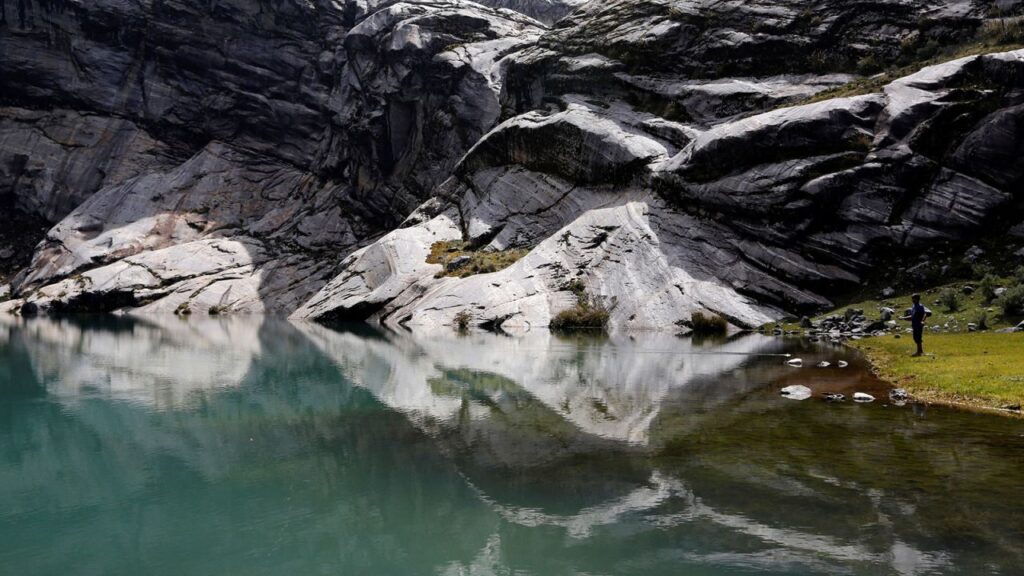
The rapid melting of glaciers in Peru is a serious concern, as it threatens the country’s water security and ecosystems. Peru’s the largest tropical glacier reserves in the world, but they have been shrinking rapidly due to rising temperatures caused by climate change. According to a new government inventory, Peru has lost 56% of its tropical glaciers in the last six decades.
A recent report from Peru’s highlighted a concerning impact of climate change, revealing a significant decrease in the country’s tropical glaciers. The National Institute of Research on Mountain Glaciers and Ecosystems stated on Wednesday that Peru, which hosts 68% of the world’s tropical glaciers, has experienced a striking 56% reduction in glacier coverage over the past six decades.
This loss, linked to rising global temperatures, not only raises environmental concerns but also poses substantial risks to local communities. Melting glaciers have led to the formation of new mountain lagoons, heightening the threat of floods due to potential overflow, as revealed by a thorough study using satellite imagery data up to 2020.
Peru, boasting 2,399 square kilometers of ice and snow in 1962, now only has 1,050 square kilometers of glaciers spread across 2,084 identified sites. Beatriz Fuentealba, the institute’s director, emphasized the severity of the situation, noting a worrying 6% loss of high mountain glaciers from 2016 to 2020, particularly in the Ancash region.
The report also sheds light on the emergence of new glacial lagoons, numbering 8,466 and covering an area of about 1,081 square kilometers. While these lagoons could potentially serve as future water reserves, their high-altitude locations between 4,000 and 5,000 meters pose significant flooding risks.
Peru’s tropical glaciers, primarily situated 6,000 meters above sea level, play a crucial role in local ecosystems and support communities reliant on them for water and agriculture. The loss of these glaciers underscores the pressing need for global action on climate change, with direct consequences now affecting countries and communities.

Global Glacier Loss
The decline of glaciers globally, particularly in regions like Peru, signifies a profound environmental shift interconnected with broader climate change impacts. Often referred to as Earth’s “freshwater reservoirs,” glaciers not only store fresh water but also reflect sunlight, moderating the planet’s temperature. However, with rising global temperatures, glaciers are melting at an unprecedented rate, leading to environmental consequences.
Sea-level rise is a visible effect of glacier loss, as melting glaciers contribute to the gradual increase in sea levels, threatening coastal communities and low-lying areas with flooding and potential displacement.
Additionally, glacier melt can lead to the formation of glacial lakes, a potential source of freshwater but also poses a risk of catastrophic floods. This risk is particularly significant in mountainous regions where downstream communities may be located.
Also See: Hisashi Ouchi, Who Was Exposed To Highest Level Of Radiation
The loss of glaciers also impacts water availability, as many rivers depend on glacier meltwater, affecting agriculture, hydropower generation, and daily life for those reliant on these water sources.
Furthermore, glacier retreat alters ecosystems, leaving behind barren land that undergoes ecological succession, creating new habitats but also disrupting existing ones. This has implications for the flora and fauna adapted to cold glacier environments.
Lastly, the cultural and aesthetic significance of glaciers cannot be overlooked, as many cultures view them as sacred entities. Their disappearance can have cultural and psychological impacts on these communities.

[…] Also See: Peru Glaciers Decline by Over Half in 60 Years […]